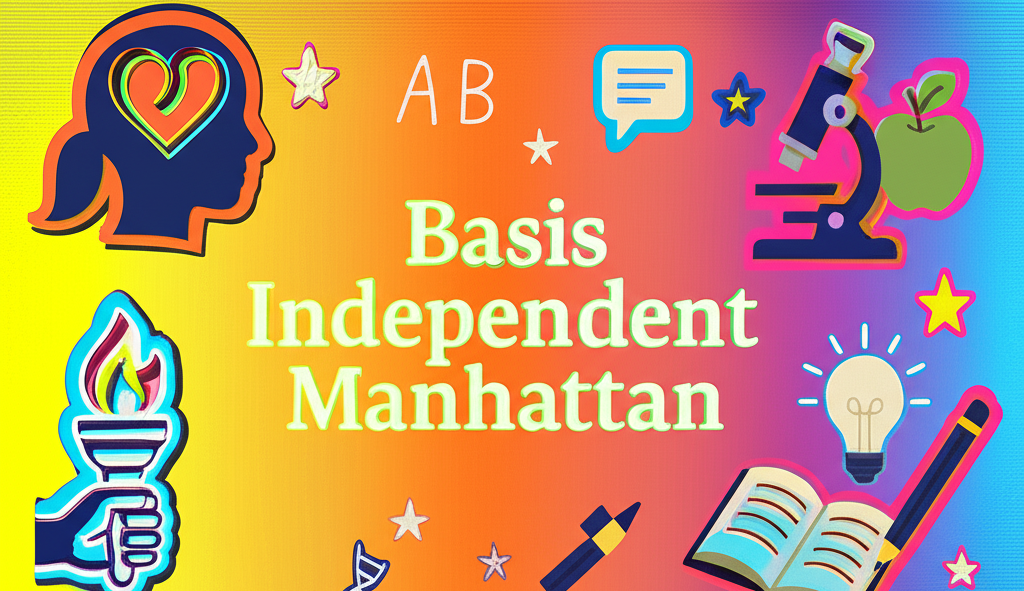BASIS Independent Manhattan: NYC’s Rising Star of Academic Rigor
Not Just a School — An Academic Engine

If New York City’s private school scene were a constellation, BASIS Independent Manhattan (BIM) would be one of the brightest new stars lighting up the sky. With sky-high SAT scores, a STEM-heavy curriculum, and students heading to Stanford, Yale, and UCLA, BIM isn’t just another newcomer — it’s rapidly becoming a serious contender in the city’s elite school ecosystem.
But what’s life really like behind the rankings? We did a deep dive into the facts, feedback, and future of BIM — and here’s what we found.
The Basics of BASIS
- Type: Private, secular, PreK–12
- Campuses: Lower School (Columbus Ave, PreK–5), Upper School (W. 22nd St, Grades 6–12)
- Network: Part of the BASIS Curriculum Schools, with campuses nationwide
- Student Body: ~280–290 students
- Student-Teacher Ratio: 5:1 (or 7:1, depending on who you ask)
- Tuition: $47,775 for upper school (plus mandatory fees)
Academic Powerhouse: The Numbers Don’t Lie
BIM is all in on academic excellence — and it shows.
- Average SAT (Class of 2024): 1487
- Average ACT: 33
- Graduation Rate: 100%
- AP Pass Rate: 97%
- AP Exams Taken: Students average 12.4 APs by junior year
- AP Scholars: Nearly every senior in 2024 was recognized
With a curriculum built around Advanced Placement exams and globally benchmarked standards, BIM students don’t just take challenging classes — they dominate them.
Curriculum Highlights
- 23–28 AP courses offered, from Microeconomics to Computer Science A
- A signature Capstone program in senior year
- A heavy STEM focus, but liberal arts are part of the program too
- A two-teacher model in primary grades: Subject Expert Teachers (SETs) + Learning Expert Teachers (LETs)
- Engineering, debate, and robotics all start early
Parents and students consistently describe the coursework as “college-level,” and many credit BIM for building serious academic habits and time-management skills.
College Outcomes: All Eyes on the Ivies
For its very first graduating class in 2024, BIM posted some eye-popping college acceptances:
- 23% accepted to top 10 schools
- 56% to top 25
- 100% to top 75
- Matriculations include: Yale, Stanford, Duke, Cornell, UCLA, CMU, and Wesleyan
Not bad for a school that just opened its doors to upper schoolers a few years ago. Parents say the college counseling is “structured, intensive, and effective,” with students getting one-on-one support through every step.
The Teachers: PhDs Meet Passion
About 88% of faculty hold advanced degrees, and BIM is known for hiring subject-matter experts, even former college professors. This means deep academic discussions are the norm, even in middle school.
That said, teacher turnover is a concern. While some students rave about their teachers, others mention inconsistent classroom management or a more distant teaching style — possibly a side effect of prioritizing expertise over K–12 experience.
Student Life: High Achievers, Low Key
Here’s what the students themselves say:
- “The workload is intense.”
- “There’s not a ton of school spirit yet, but it’s improving.”
- “People are mostly kind, and the diversity is good.”
The Debate Team has won city championships. There’s robotics, clubs, and growing arts programs — but sports and traditions are still maturing. Think: a rigorous academic hub still finding its social rhythm.
Community and Diversity
BIM’s student body is:
- 42% White
- 33% Asian
- 16% Two or more races
- 6% Hispanic
- 2% Black
The environment is described as “diverse, safe, and focused.” Some families love the low-drama culture and appreciate the school’s attention to student well-being. Others wish for more robust extracurriculars and a stronger emphasis on arts and sports.
What Parents (and Students) Are Saying
Praise
“BIM gave our child a phenomenal academic foundation. She’s now at Yale, and we credit the school for preparing her beyond just the tests.”
“The teachers are passionate, the classes are challenging, and my son is intellectually engaged every day.”
“Small class sizes mean real individual attention.”
Concerns
“The workload is overwhelming at times. Some kids burn out.”
“Teacher turnover makes it hard to build strong student-teacher bonds.”
“School culture — spirit, sports, events — still feels like it’s in development.”
The Cost of Excellence
- Tuition: $47,775 for high school
- Mandatory fees: ~$2,500 in technology/activity/insurance
- No need-based financial aid
- Limited merit scholarships for select grades
The bottom line: it’s expensive — and not accessible to all. The school’s no-fundraising, no-aid policy stands out in contrast to most NYC private schools, which often offer financial support through fundraising campaigns.
Bonus: Robotics, Debate, and Beyond
- BIM’s Debate Team is a two-time city league champion
- Robotics starts in the early years and continues through high school
- Students run startups, launch research projects, and publish in school blogs
- The school encourages entrepreneurship, public speaking, and hands-on learning
BIM isn’t just about lectures — it’s also about turning kids into thinkers, tinkerers, and problem-solvers.
Final Verdict: Is BIM the Right Fit?
Choose BIM if you want:
- A STEM-forward, academically elite experience
- Small class sizes and deep subject-matter instruction
- A clear path to top universities
- A culture that values intellect and drive
Maybe think twice if you’re looking for:
- A broad-based liberal arts education with equal focus on arts and humanities
- Robust school traditions, sports, and spirit
- A financially inclusive environment with generous aid
- A relaxed pace or less test-heavy approach
Final Thoughts
BASIS Independent Manhattan isn’t trying to be everything to everyone — and that’s part of what makes it stand out. It’s a school that bets big on academic outcomes and pushes students hard. For families aligned with that mission, it can be transformative.
As the school matures, develops its community life, and tackles growing pains like teacher retention and extracurricular expansion, it’s clear that BIM is more than just a rising star. It’s a bold experiment in what 21st-century education can look like when you combine global benchmarks, deep expertise, and high expectations — all right in the heart of Manhattan.
